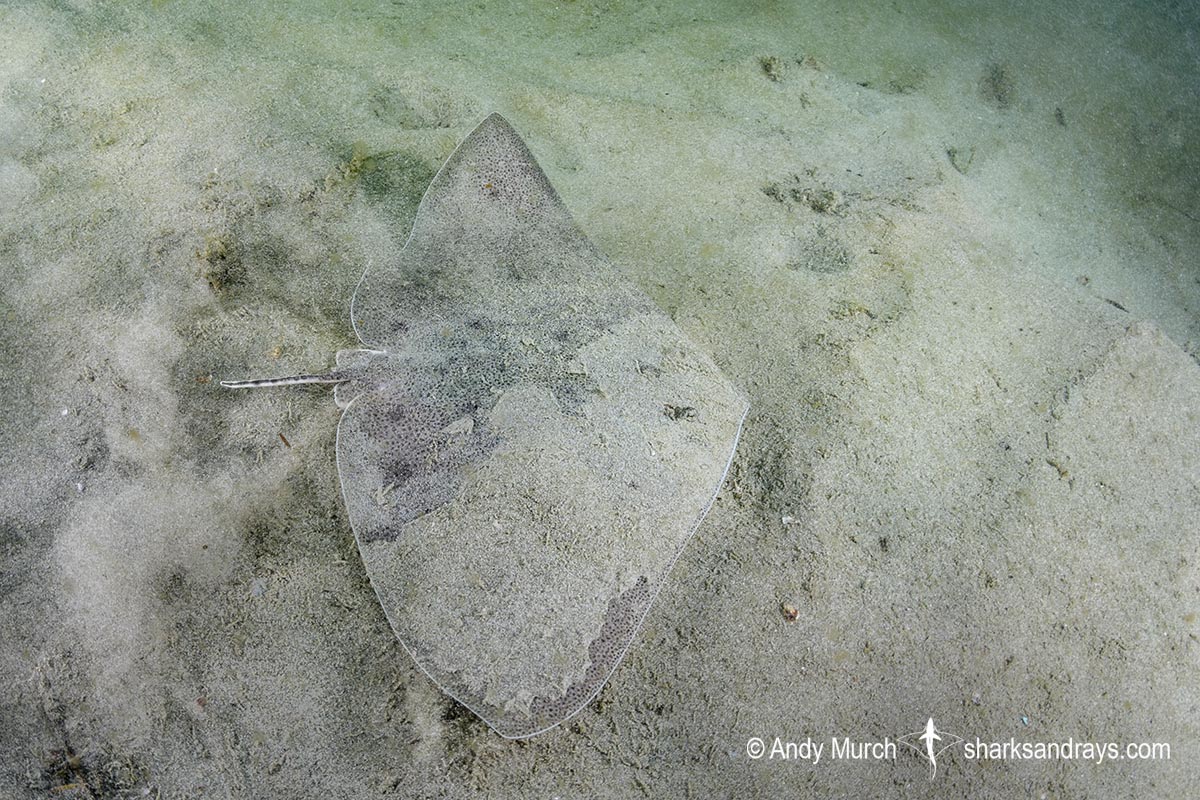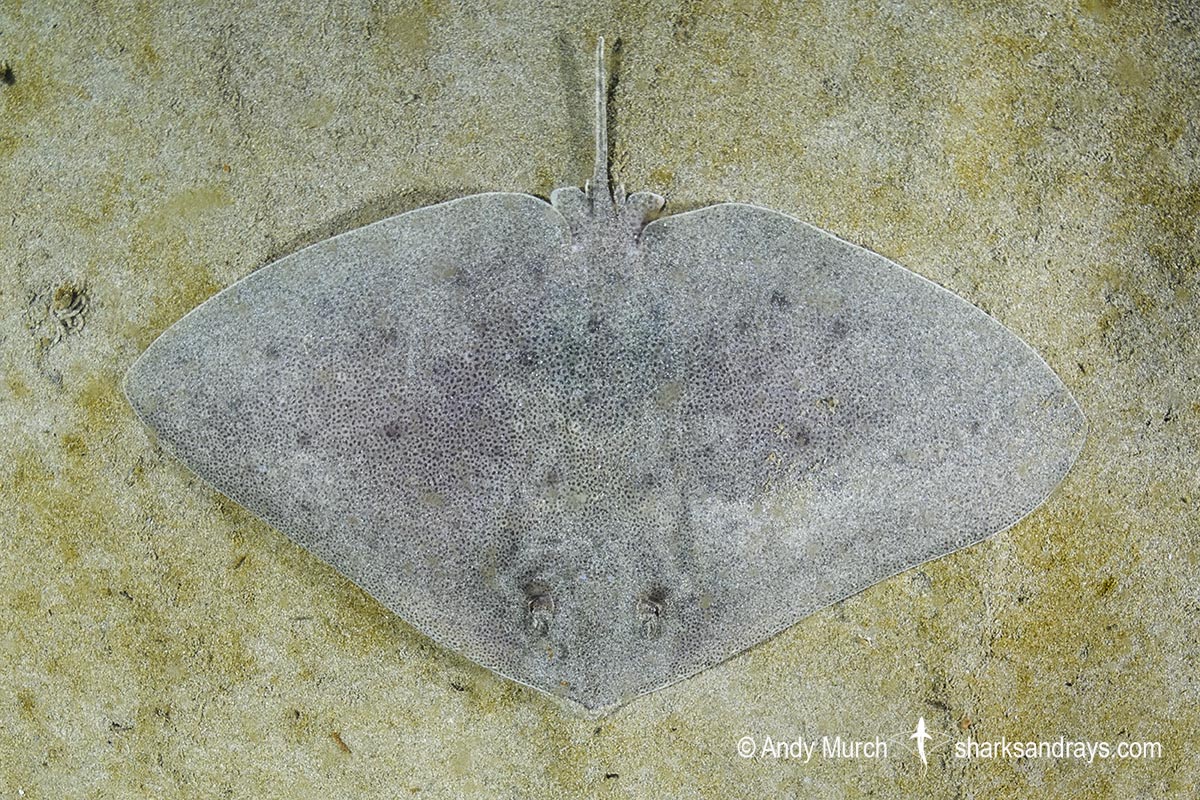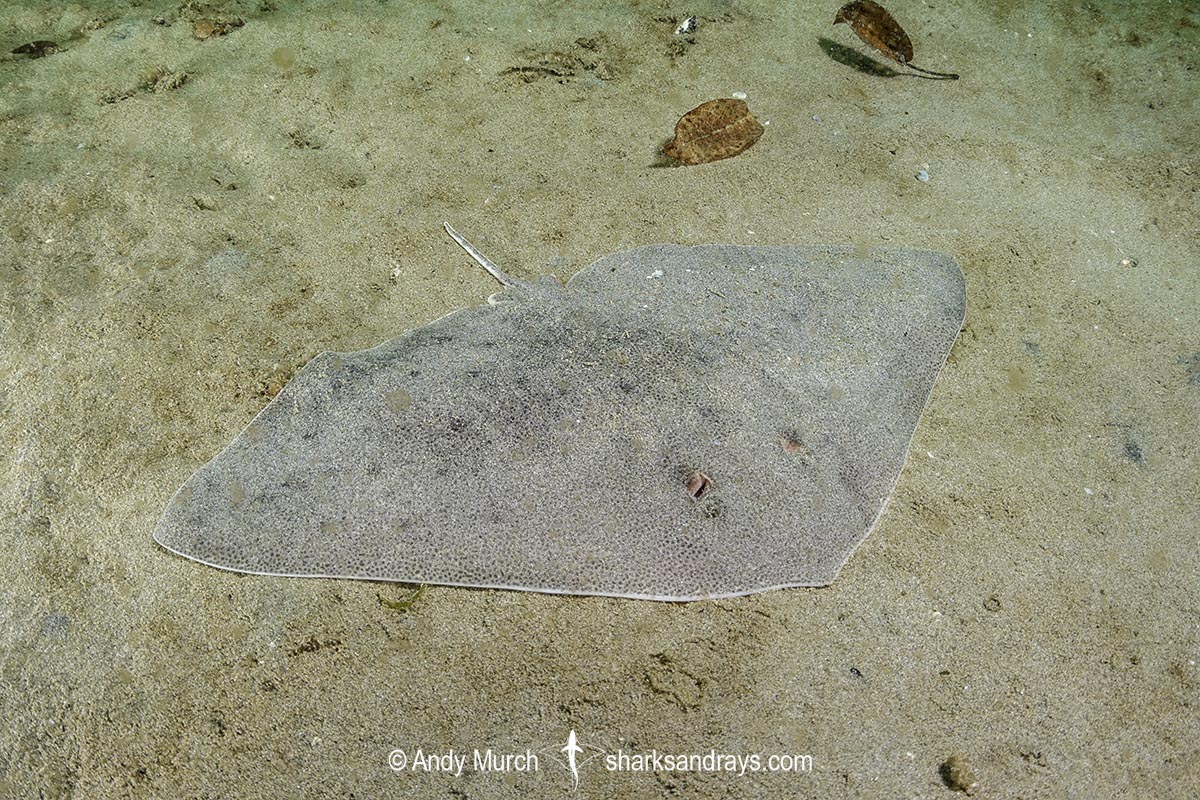Common name(s)
Mazatlan Butterfly Ray, Longsnout Butterfly Ray.
Binomial
Gymnura crebripunctata
Synonyms
Pteroplatea crebripunctata, Pteroplatea rava.
Identification
A small butterfly ray with a wide, vaguely kite-shaped disc. Disc width approximately 1.6-1.9 x length. Pectoral fin apices angular. Snout short and broadly obtuse. Snout shorter and more rounded in females and juveniles, slightly longer and more angular in mature males.
Eyes very small. No tentacle present on posterior margins of spiracles. Spiracle has a deeply concave inner margin. Mouth arched with a convex symphysis on lower jaw.
Skin completely smooth. Tail short. Dorsal fin absent. Caudal sting absent.
Colour
Dorsum overall brownish-grey, pinkish-grey in juveniles. Usually with a pattern of very small, irregular, dark spots and paired larger diffuse dark blotches. Dorsum sometimes unmarked. Ventrum white with dark margin and pectoral fin tips. Tail subtly banded.
Size
Maximum disc width 81cm. Disc width at birth unknown.

Conservation Status
NEAR THREATENED
The Mazatlan Butterfly Ray (Gymnura crebripunctata) is captured in artisanal gillnets, beach seines, longlines, and trawl fisheries. Largely unregulated artisanal fishing pressure is intense throughout much of this species range.
It is estimated that the Mazatlan butterfly ray population has been reduced by 20-29% over the last 45 years.

Habitat
Tropical to warm-temperate water. On sandy or muddy substrates, often in shallow bays and estuaries, and on sandy slopes from intertidal to at least 30m.
Distribution
Eastern Pacific Ocean. Sea of Cortez, Mexico, to northern Peru.
Reproduction
Viviparous. Litter size unknown.
Diet
Diet unrecorded but probably feeds mostly on small fishes like other butterfly rays.
Behavior
Sedentary. Camouflages its body with sand by flapping its fins while resting on the bottom.
Reaction to divers
Fairly tolerant but will bolt if approached closely or if divers attempt to waft sand away from its disc.
Diving logistics
Relatively common in Guanacaste, Costa Rica. I have encountered this species in January in Playa El Jobo and Playa Del Coco. More common during the colder months from December to February.
What’s new
View our full list of updates
California Butterfly Ray Distinguished by tail with a diphycercal tip, and presence of caudal sting.








